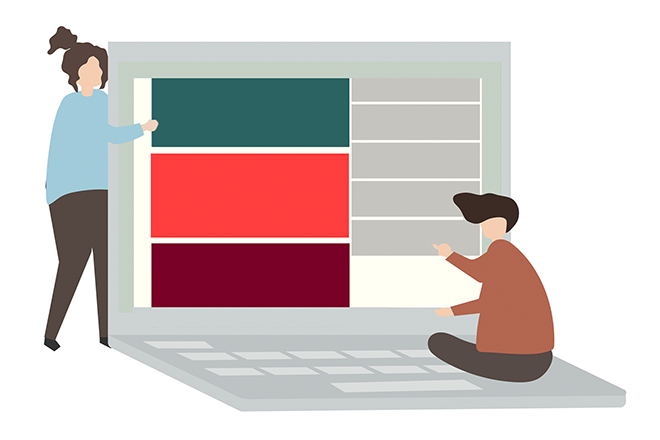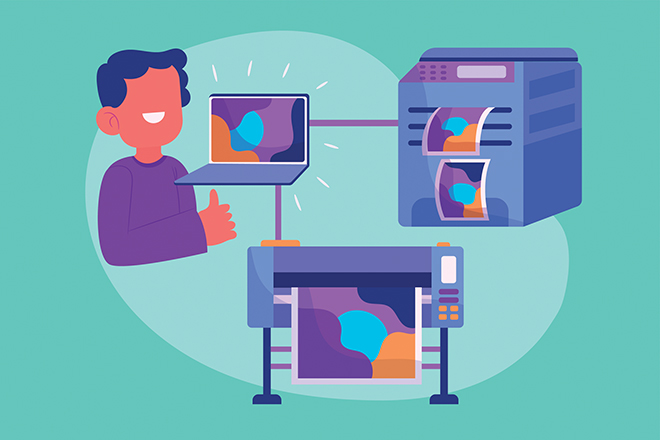Manual Imposition or Software Imposition-Which is Better for You?
The printing industry has come a long way from manual imposition of PDF print files to automating imposition with software. Like most things, both manual imposition and software imposition have their own advantages and disadvantages. It’s important to understand these differences in order to make an informed decision when preparing PDF files for pre-press.
Manual Imposition of PDF Print Files
Manual imposition refers to the process of arranging multiple pages of a document in the correct order and position on a larger sheet of paper. The process is done manually by a print professional such as press operator, compositor, or proofreader.

Advantages of Manual Imposition:
- It’s a cost-effective solution as it doesn’t require any software or hardware.
- Manual imposition is ideal for small print runs as it’s a quick and simple process.
- It provides the print professional with complete control over the final layout of the document.
Disadvantages of Manually Imposing Files:
- Manual imposition can be a slow and tedious process, especially for large print runs.
- Manually imposing files increases the risk of human error, such as misaligned pages, incorrect page order, or mis-marked crop marks.
- Manual imposition can result in inconsistencies in the final printed product. This can be a problem for projects that require precise registration or color accuracy.
- It limits flexibility. As a result, it typically requires the use of physical templates, which can be inflexible and difficult to modify.
- Manual imposition can be inefficient. It often requires multiple passes through the printer, which can increase production time and cost.
Overall, manual imposition is best suited for small, one-off print jobs, where the time and cost investment required for manual imposition is acceptable. Even then who needs manual imposition when it’s so quick to create a imposition template here on File Splice.
Software Imposition of PDF Print Files
Software imposition refers to the process of arranging multiple pages of a document using specialized software. The software automates the imposition process, making it faster and more accurate.

Advantages of Software Imposition:
- It’s best for large print runs and makes it easier to handle complex imposition requirements.
- Imposition software increases efficiency since it automates the arrangement of pages, reducing the time and effort required for manual imposition.
- Using software improves accuracy by eliminating the potential for human error, ensuring that the page order and placement are accurate.
- Automated imposition increases productivity and reduces the need for manual labor, freeing up staff to focus on other tasks.
- Imposition software optimizes the use of print media, reducing waste and saving costs.
- Automating the process provides for enhanced flexibility. It allows for the creation of custom imposition templates, which means greater flexibility in print job planning and execution.
- Imposition software ensures that every print job is consistent, reducing the risk of misaligned or incorrect pages.
Disadvantages of Using Software for Imposing Files
- If you don’t choose the right software, imposition can be complex to use, especially for those who are not familiar with the software.
- Imposition software purchased from the big box dot coms, can be costly, as specialized software must be purchased and maintained.
- There is a risk of human error in the imposition process, which can lead to incorrect page orders or placement.
- Depending on the software, imposition can have limitations in terms of the types of layouts it can produce and the complexity of the designs it can handle.
- Software imposition requires regular maintenance and updating to ensure that it is working correctly and is compatible with current software and hardware.
For larger print runs or for projects that require precise and consistent results, however, automated imposition is usually a better option.
Summary
In conclusion, both manual imposition and software imposition have their own advantages and disadvantages. The choice between the two depends on various factors such as the size of the print run, budget, and level of expertise. If you’re looking for a cost-effective solution for small print runs, manual imposition may be the best choice. However, if you’re looking for a fast and efficient solution for large print runs, software imposition is the way to go.
Questions?
Contact us at info at filesplice dot com. We’re happy to assist you with answers to your questions about imposition software and how it can benefit you.
